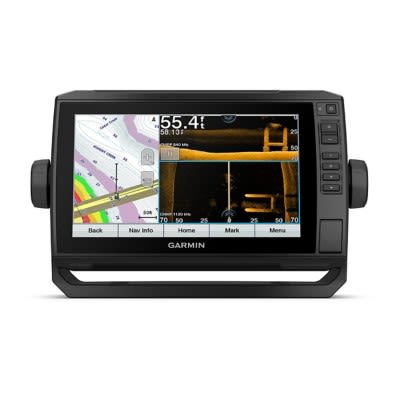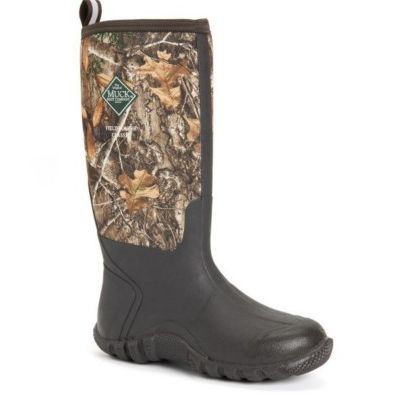Today's Best Fishing Times
Get the best fishing times for Okabena Lake with Lake-Link's Fishing Forecast. SEE MORE
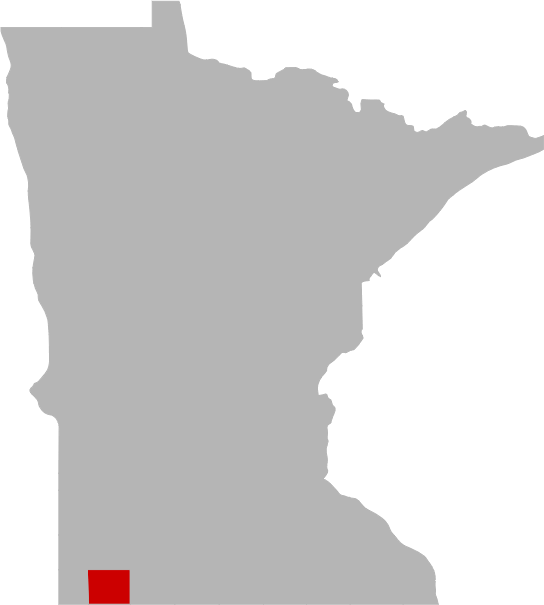

Share Your Catch & Win!
Frequently Asked Questions About Okabena Lake, MN
- How big is Okabena Lake?
- How deep is Okabena Lake?
- What kind of fish can you catch in Okabena Lake?
- What are the closest cities to Okabena Lake?
- Are there places to stay in the Okabena Lake area?
- Are there boat launches on Okabena Lake?
- Are there places to eat and drink near Okabena Lake?
- What is the average air temp for Okabena Lake?
How big is Okabena Lake?
How deep is Okabena Lake?
What kind of fish can you catch in Okabena Lake?
Other fish species in the lake include Fathead Minnow, Freshwater Drum, Golden Shiner, Hybrid Sunfish, Iowa Darter, Johnny Darter, Orangespotted Sunfish, Spottail Shiner, Tadpole Madtom and White Sucker.
What are the closest cities to Okabena Lake?
Are there places to stay in the Okabena Lake area?
More Lodging Options
Are there boat launches on Okabena Lake?
Are there places to eat and drink near Okabena Lake?
Explore the Okabena Lake area in a RV
Are you looking for an adventurous vacation option that won't break the bank? Look no further than renting an RV! Contrary to popular belief, the process is much simpler than you might imagine. With just a few easy steps, you'll soon be experiencing the ultimate freedom and convenience of exploring the open road in your very own recreational vehicle. And the best part? RV travel can save you up to 60% compared to other types of vacations! With the money you'll save, you'll be able to travel even more and create unforgettable memories along the way. So why wait? Start planning your next adventure today with an RV rental. Learn more about renting a RV.
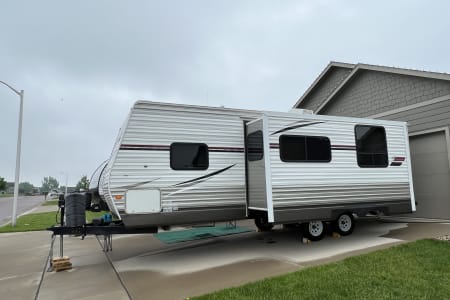

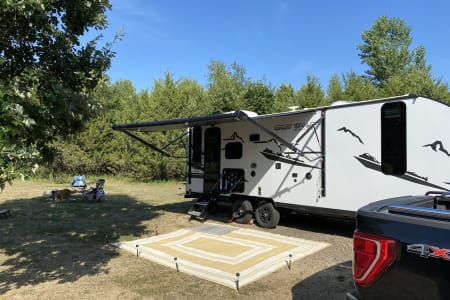
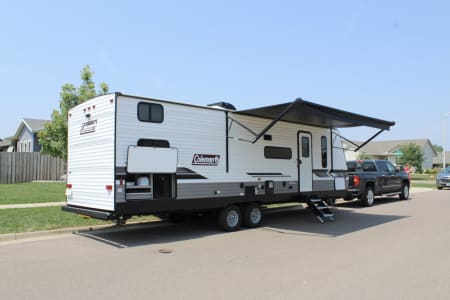
History & Status of the Fishery
INTRODUCTION
Lake Okabena is a 751-acre lake located within the City of Worthington in Nobles County. Lake Okabena has a watershed to lake ratio of 19:1, meaning it receives drainage from over 14,000 acres of agricultural row crops and impervious surfaces from part of the City of Worthington. Lake Okabena has a mean depth of 8.0 feet and a maximum depth of 16.0 feet, which, until 1985, was maintained by dredging. Residential development has disturbed and altered some of Lake Okabena's shoreline; however, the majority of its shoreline is owned by the City of Worthington, which allows ample opportunity for shoreline anglers. In areas with residential development, lawns are typically maintained to the water's edge and shorelines are altered with rock riprap, thereby disrupting the natural riparian buffer. Excessive nutrient runoff from lawns, impervious services, and agricultural fields likely contribute to Lake Okabena's turbid water (Secchi depth = 0.9 feet). The primary management species in Lake Okabena are walleye and channel catfish, and the secondary management species are black crappie, white crappie, bluegill, and yellow perch. Walleye fry have been stocked at a rate of 1,000 per littoral acre two out of three years since 2006 (2006, 2007, 2009, 2010, 2012, 2013, and 2015). In cooperation with the Southwest Minnesota Fishing Club, pre-spawn bluegill, largemouth bass, northern pike, or black crappie are stocked annually into drainable wetlands (Worthington Pond 1 and Worthington Pond 2) that are connected to Lake Okabena via Whiskey Ditch. Water is retained in the ponds until early October, which allows the young-of-the-year (YOY) fish to grow to a size conducive for survival, and then is drained into Whiskey Ditch and eventually into Lake Okabena. The amount of fish produced in a year in these ponds has not been quantified, but it is likely that this operation provides some benefit to fish populations in Lake Okabena. A population assessment was conducted during the week of August 18, 2014 to monitor fish populations using three gill nets and 12 trap nets.
WALLEYE
Walleye were captured at a rate of 12.3 per gill net in 2014, which is within the long term range of catch rates observed in Lake Okabena (4.3 per gill net in 1986 to 36.5 per gill net in 1982) and is within the expected range of catch rates for similar lakes (3.2 to 15.3 per gill net). The trap net catch rate in 2014 was 3.6 per trap net, which is greater than the expected range of catch rates for similar lakes (0.3 to 1.7 per trap net). Since 2006, walleye fry have been stocked at a rate of 1,000 fry per littoral acre, two out of three years. This strategy has produced catch rates that have been well above the upper quartile of catch rates in 2006 (34.0 per gill net) and 2008 (23.3 per gill net), and just below the upper quartile of catch rates in 2010 (14.7 per gill net) and 2014 (12.3 per gill net), indicating that this stocking strategy has been very successful at maintaining an abundant walleye population. A population abundance model was used to estimate the 2014 population size for Lake Okabena based on gill net catches of walleye. The model estimated that there are potentially 27,211 walleyes in Lake Okabena. Walleyes captured in gill nets ranged from 8.0 to 22.4 inches in length and averaged 13.0 inches. Trap netted walleyes ranged in length from 7.4 to 28.4 inches and averaged 11.0 inches. Eight year classes of walleye were sampled (2003, 2007, 2008, 2009, 2010, 2011, 2012, and 2013) including some years that do not correspond to stocking events. This indicates that some natural reproduction may be occurring, albeit limited. Age classes that do not correspond to stocking events include age-3 (2011) and age-6 (2008). The 2013 year class (age-1) was the most abundant and was a major component of the walleye population in Lake Okabena. Growth of walleye has improved since the last survey done in 2010 lengths at age increased from 10.0 inches at age-2 and 12.0 inches at age-3 in 2010 to 12.0 inches at age-2 and 14.1 inches at age-3 in 2014. Increased growth could be the result of higher prey availability, particularly freshwater drum (23.0 per gill net), which are relatively new to this system (first captured in 2010), and bigmouth buffalo (22.7 per gill net and 11.5 per trap net), which prior to the 2014 survey, had occurred in low abundance in Lake Okabena (less than 1.0 per gill net and 0.3 per trap net). Yellow perch are also one of the major prey items for walleye; however, the increase in walleye growth rates is likely not connected to yellow perch, as the 2014 yellow perch catch rate of 23.0 per gill net remained about the same as the 2010 yellow perch catch rate of 24.7 per gill net, as did their size structure. Despite increased growth rates, walleyes were skinny. A strong 2013 year class should provide some good walleye angling within the next couple of years when they reach a size desirable to anglers.
CHANNEL CATFISH
The channel catfish catch rates have been highly variable in Lake Okabena, ranging from 0.5 per gill net in 2004 to 106.3 per gill net in 1986. In 2014, channel catfish were captured at a rate of 20.0 per gill net; down from the 2010 catch rate of 43.0 per gill net, but slightly higher than the long term average of 18.9 per gill net. Channel catfish ranged in length from 16.1 to 23.2 inches and averaged 20.2 inches. Three year classes of channel catfish were sampled including 2004, 2005, and 2006. Fifty-seven percent of the catfish sampled were age-10, which corresponds to the most recent stocking in 2004. The presence of the 2005 (40 percent of the sample) and 2006 (35 percent of the sample) year classes indicate that some natural reproduction by channel catfish occurs in Lake Okabena, and may be enough to sustain the population. Channel catfish are managed in Lake Okabena to control the black bullhead population. When channel catfish abundance is low, black bullhead abundance tends to be higher, and vice versa. Channel catfish catch rates have been high in the last three surveys 30.7, 43.0, and 20.0 per gill net in 2008, 2010, and 2014, respectively. Consequently, black bullhead gill net catch rates have been below 2.0 per gill net in those surveys. Lake Okabena's channel catfish population should provide a good fishing opportunity for years to come.
CRAPPIES
Characteristic of crappie populations, black and white crappie catch rates in Lake Okabena have been highly variable with catch rates ranging from 0.9 per trap net in 1982 to 68.1 per trap net in 2002 for black crappies, and 0.1 per trap net in 2008 to 44.3 per trap net in 1982 for white crappies. The 2014 black crappie catch rate of 36.7 per trap net was the third highest catch rate since 1982 and was much higher than the expected range of catch rates for similar lakes (1.0 to 12.3 per trap net). The 2014 white crappie catch rate of 1.0 per trap net was within the expected range of catch rates for similar lakes (0.5 to 15.9 per trap net). The low abundance of white crappie in Lake Okabena may be a result of the high abundance of black crappie. The two species of crappie can coexist, but one of the species usually will occur at a lower abundance. Black crappie were small, with most of them (99 percent) being between 5.9 and 7.8 inches in length. Only two of the black crappie sampled were greater than 10 inches in length. White crappie were also small, ranging in length from 6.9 to 8.2 inches. Otoliths from three black crappies were aged and were estimated to be age-2 (2012 year class). The narrow range of lengths of black crappie indicates that most of them are likely from the same year class in 2012 (age-2). If growth of black crappie continues to be good, a highly abundant population should be available to anglers within the next couple of years.
BLUEGILL
The 2014 bluegill catch rate was 0.4 per trap net, which is below the expected range of catch rates for similar lakes (1.1 to 14.8 per trap net), and the lowest observed catch rate since 2004 (0.2 per trap net). Catch rates of bluegill in Lake Okabena have historically been highly variable (0.1 per trap net in 1990 to 12.7 per trap net in 2000), and have averaged 2.8 per trap net since 1982. Bluegills ranged in length from 6.8 to 8.0 inches and averaged 7.4 inches. A near shore survey done in 2010 captured nearly 5,000 YOY bluegills, suggesting that the bluegill population was on the upswing in Lake Okabena. It appears that while bluegills successfully reproduced in 2010, the YOY bluegills did not recruit to the population, as indicated by the poor catch rate in 2014. Recruitment of bluegills could be influenced by a number of factors including, but not limited to predation, survival through the winter, food availability, etc. The characteristics of Lake Okabena do not favor bluegills, as water quality is poor and aquatic vegetation is scarce. Bluegills tend to do well in lakes that have clear water and abundant vegetation. While the effort to enhance Lake Okabena's bluegill population by using connected ponds as bluegill rearing ponds is aesthetically pleasing, it appears that it is having little effect on the population.
YELLOW PERCH
Historical catch rates of yellow perch have ranged from 9.7 per gill net in 1986 to 116.7 per gill net in 2006. In 2014, yellow perch were captured at a rate of 23.0 per gill net, similar to the 2010 catch rate of 24.7 per gill net, and slightly greater than the expected range of catch rates for similar lakes (3.0 to 22.5 per gill net). Yellow perch ranged in length from 6.1 to 9.9 inches and averaged 7.6 inches. Lake Okabena's yellow perch provide a good forage base for walleye, but do not provide much of an angling opportunity for fishermen.
NORTHERN PIKE
Although not specifically managed for northern pike, Lake Okabena has maintained a low abundance pike population. The 2014 catch rate of northern pike was 1.3 per gill net, equal to the highest observed catch rate in Lake Okabena. Northern pike ranged in length from 17.6 to 25.0 inches and averaged 22.3 inches.
FRESHWATER DRUM
Freshwater drum are relatively new to Lake Okabena, as they were first sampled there in 2010 (N=1 in trap net). Since, the freshwater drum have taken off, and were captured at a rate of 23.0 per gill net in 2014, which is near the upper end of expected catch rates for similar lakes (24.2 per gill net). Two freshwater drum, 14.0 to 16.0 inches in length were captured, likely representing fish from the original introduction of this species. The rest of the sampled freshwater drum ranged from 9.0 to 10.5 inches (probably one year class), indicating that the original introduced fish successfully reproduced in Lake Okabena. Young-of-the-year freshwater drum can provide an additional prey resource for walleyes and other large predators when they are small; however, they can also compete with the more desirable species of fish (walleye, northern pike, yellow perch, black crappie, white crappie) for habitat and prey resources. Freshwater drum could have potentially entered Lake Okabena through the diversion prior to 2010. That diversion was closed in 2012 in an effort to prevent the movement of invasive carp. The introduction may also have been unintentional via a bait bucket. To avoid unintended introductions, anglers should be diligent about disposing of unused bait in the trash, and should report unpermitted movement of fish.
OTHER SPECIES
Common carp were captured at a rate of 16.0 per trap net, which is the second highest catch rate of carp on Lake Okabena. The majority (94 percent) of common carp were between 10.0 and 15.0 inches, indicative of one strong year class accounting for most of the population.
Bigmouth buffalo abundance in 2014 was the highest recorded in survey history on Lake Okabena (22.7 per gill net, 11.5 per trap net). Bigmouth buffalo sampled in gill nets and trap nets ranged in length from 7.6 to 11.0 inches, likely representing a single year-class.
Black bullhead abundance continued to be low (1.3 per trap net), likely a result of predation by channel catfish. Other species of fish sampled included white sucker, golden shiner, and pumpkinseed.
Plants in the water and at the water's edge provide habitat, prevent erosion, and absorb excess nutrients. Shrubs, trees, and woody debris such as fallen trees or limbs provide good habitat both above and below the water and should be left in place. By leaving a buffer strip of natural vegetation along the shoreline, property owners can reduce erosion, help maintain or improve water quality, and provide habitat and travel corridors for wildlife.
Best management practices within the watershed (no-till farming, cover crops, buffer strips, targeted fertilizer application, reduced or metered tiling) would help reduce nutrients entering the lake. High nutrient and sediment input can cause algae blooms and reduce overall water quality. Any improvements in the watershed are likely to have positive impacts on the fishery.
Prepared by Jonah Dagel
What is the average air temp for Okabena Lake?
More Nearby Lakes To Explore
There's more lake's to explore around Okabena Lake...| DISTANCE | ACRES | MAX DEPTH | |
| Ocheda Lake | 3.3 mi | 1,691 | 5 ft |
| Bella Lake | 7.1 mi | 180 | 14 ft |
| Indian Lake | 9.1 mi | 197 | 6 ft |
| Round Lake | 9.9 mi | 930 | 9 ft |
| West Graham Lake | 14.0 mi | 519 | 8 ft |
| East Graham Lake | 14.2 mi | 511 | 8 ft |
| Ocheyedan Pit #1 | 16.2 mi | 10 | 17 ft |
| Kinbrae Lake | 16.4 mi | 98 | 7 ft |
| First Fulda Lake | 16.7 mi | 123 | 7 ft |
| Second Fulda Lake | 17.4 mi | 64 | 5 ft |






